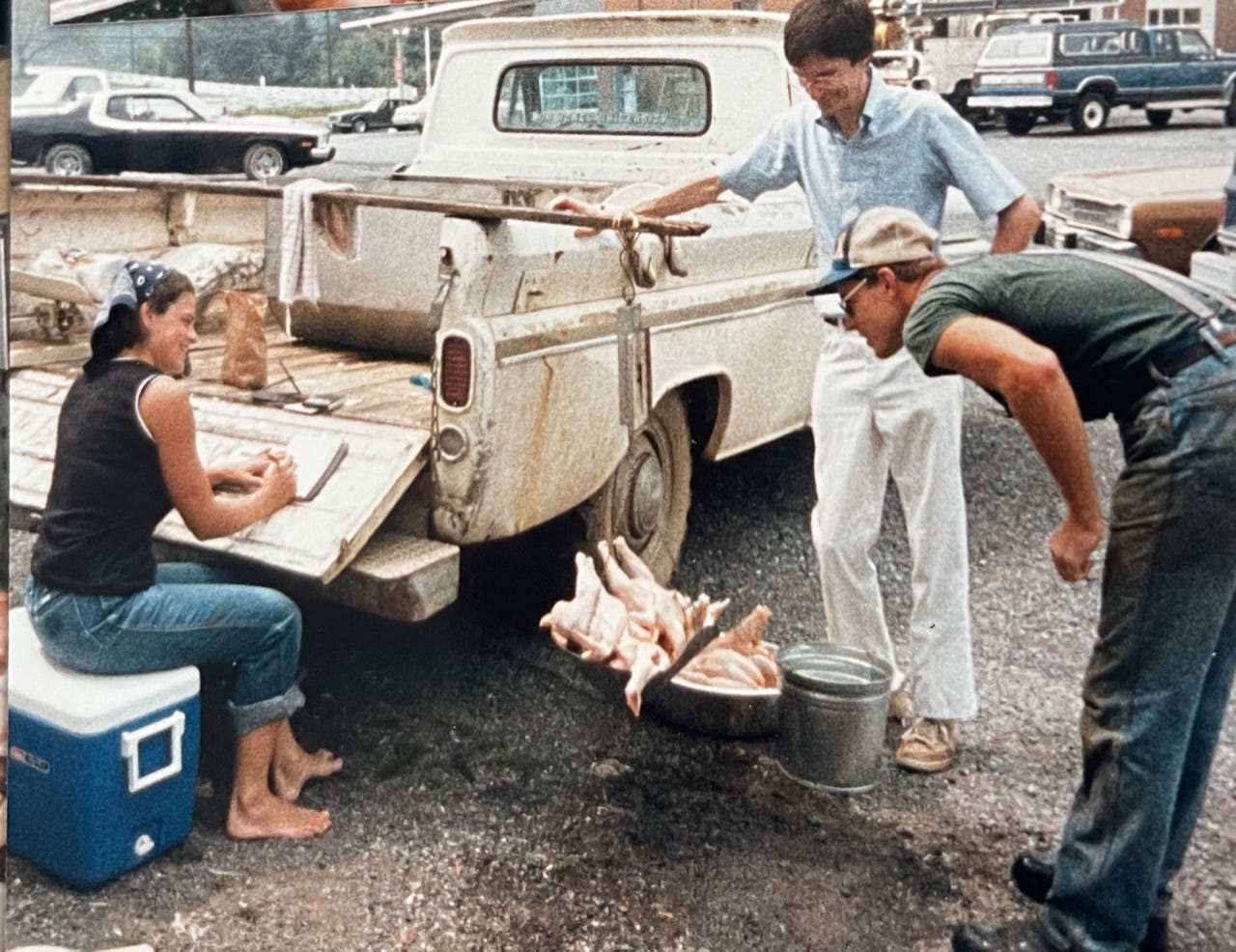Joel Salatin got his first chickens at 10 years old. Loved farming and knew it was life’s calling. Parents encouraged this passion, and by the time he was 14, there were hundreds of chickens on the family’s hobby farm. Looking for a place to sell, he joined a “curb market” in Staunton Virginia. The year was 1971.
Curb markets began to crop up in the early 1900s. There’s not much official photography or historical record of the early ones. The idea was and is that a farmer can setup a table, or a carriage, or a truck on the ‘curb’ of a city street and sell unregulated foods directly to people. A way for farmers to get a much better rate for a box of peaches than wholesale, and for eaters to get a cheaper peach than at a store.
In the Shenandoah region of Virginia, curb markets became an economic lifeblood of farm families during the Great Depression. Farmers were ‘food rich’ and ‘cash poor’. City dwellers were the opposite… which makes one question society’s definition of the words ‘rich’ and ‘poor’. The market became a key cultural institution into the 40s and 50s, as dozens of local vendors sold produce, meat, homemade baked goods, jams and more. It was a thriving embodiment of what the economist John Maynard Keynes would call the local multiplier effect.
By the 60s the Staunton curb market had lost steam to the newfangled “supermarket” and in the early 70s, when Joel signed up, it was down to just two vendors. Mrs. Shover, who sold a variety of meat and produce from a glorified homestead, and Mrs. Shiflett who sold exclusively baked goods.
At 14, in 1971, Joel was able to setup a completely unregulated business where he sold raw chicken, prepared chicken (which he labeled as “casserole ready chicken”) and pretty much whatever food product he wanted from the back of the family pickup. How was this possible?
Local politicians had found a clever loophole to allow the curb market to be able to exist. Instead of burdening the farmer with endless paperwork and regulations, it was simply required that each vendor be a part of 4-H or FFA. The idea being that if a person was part of an educational organization centered around food and farming, they’d be producing food safe to eat and drink. An elegant one-time solution that may once again find a place in our growing national food freedom movement. The past is prologue.
At the market, the two elderly matrons taught Joel much of what he would later use to build Polyface Farms into one of the modern-day leaders of local regenerative agriculture. It’s a heartwarming picture, two women in their twilight years, with the strength and resilience to stick around at a market decades after it’s heyday, carrying the torch of local food. And in the end, using their passion, their sticktuitiveness, their wisdom to teach a teenage farmer everything they knew about customer relations, marketing and display.
All things at the end of life go to seed. Pass along the information to replicate what came before. Some seeds are for evil, others for good. In this case, the perseverence of two elderly matrons, planted a seed in a young man who would go onto inspire thousands of people who today grow and sell food at modern day curb markets.
Here’s to you Mrs. Schiflett and Mrs. Shafer.

Below the paywall is a short rough scene in which Joel recounts the tale told above from our upcoming documentary The Right to Food. The film segment is available to our paying customers. At Leave It Better, we like to think of ourselves as the journalistic equivalent of farmers who sell at curb markets. Be like the guy in the middle of the photo above, a pioneering customer of a new kind of healthy media :)
A huge thanks to our fifty paying subscribers and to Joel for opening up his farm to us yet again. Also thanks to Jasmin for editing the short film below.
best thoughts,
Graham






